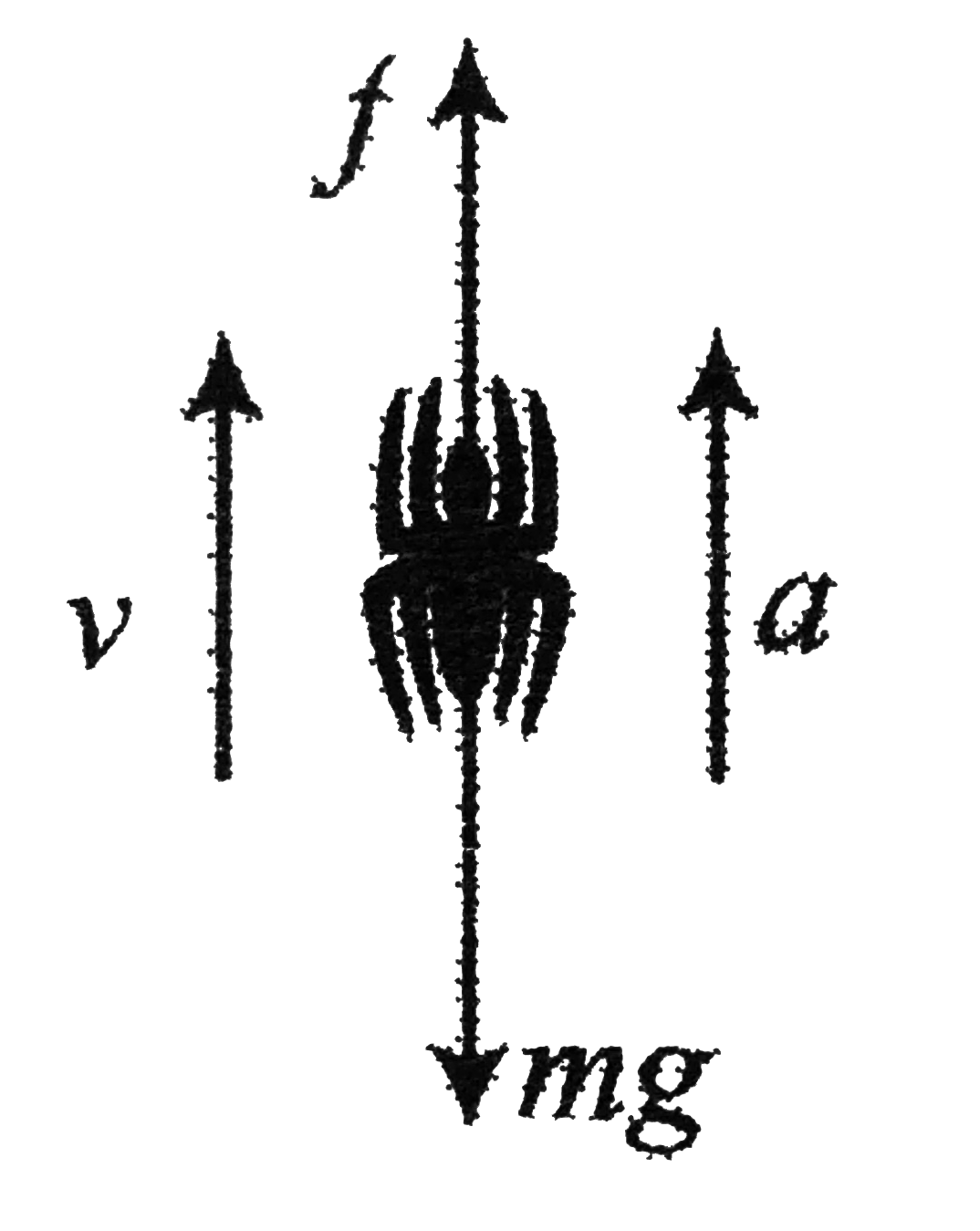A body is thrown with a velocity v0 at an angle θ0 with horizontal. Find the (a) instantaneous power delivered by gravity after a time t measured from the instant of projection and (b) average power delivered by gravity during the time t.
To solve the problem step by step, we will address both parts: (a) the instantaneous power delivered by gravity after a time t and (b) the average power delivered by gravity during the time t.
1. Identify the Components of Initial Velocity:
The body is thrown with an initial velocity v0 at an angle θ0. The components of the initial velocity can be expressed as:
v0x=v0cos(θ0)(horizontal component)
v0y=v0sin(θ0)(vertical component)
2. Determine the Vertical Velocity After Time t:
The vertical velocity vy at time t can be calculated using the equation of motion under gravity:
vy=v0y−gt=v0sin(θ0)−gt
3. Calculate the Gravitational Force:
The gravitational force acting on the body is given by:
Fg=−mg(acting downward)
4. Calculate the Instantaneous Power:
Instantaneous power P delivered by gravity can be calculated using the dot product of the gravitational force and the velocity vector:
P=Fg⋅v=−mg⋅vy
Substituting for vy:
P=−mg(v0sin(θ0)−gt)
Part (b): Average Power Delivered by Gravity
1. Calculate the Work Done by Gravity:
The work done by gravity W during time t can be calculated by finding the height h the body rises to. Using the second equation of motion:
h=v0yt−12gt2=(v0sin(θ0))t−12gt2
The work done by gravity is:
W=−mgh=−mg((v0sin(θ0))t−12gt2)
2. Calculate the Average Power:
Average power Pavg is defined as the total work done divided by the time:
Pavg=Wt
Substituting for W:
Pavg=−mg((v0sin(θ0))t−12gt2)t
Simplifying this expression:
Pavg=−mg(v0sin(θ0)−12gt)
Final Answers
- (a) Instantaneous power delivered by gravity after time t:
P=−mg(v0sin(θ0)−gt)
- (b) Average power delivered by gravity during time t:
Pavg=−mg(v0sin(θ0)−12gt)
The body is thrown with an initial velocity v0 at an angle θ0. The components of the initial velocity can be expressed as:
v0x=v0cos(θ0)(horizontal component)
v0y=v0sin(θ0)(vertical component)
The vertical velocity vy at time t can be calculated using the equation of motion under gravity:
vy=v0y−gt=v0sin(θ0)−gt
The gravitational force acting on the body is given by:
Fg=−mg(acting downward)
Instantaneous power P delivered by gravity can be calculated using the dot product of the gravitational force and the velocity vector:
P=Fg⋅v=−mg⋅vy
Substituting for vy:
P=−mg(v0sin(θ0)−gt)
The work done by gravity W during time t can be calculated by finding the height h the body rises to. Using the second equation of motion:
h=v0yt−12gt2=(v0sin(θ0))t−12gt2
W=−mgh=−mg((v0sin(θ0))t−12gt2)
Average power Pavg is defined as the total work done divided by the time:
Pavg=Wt
Substituting for W:
Pavg=−mg((v0sin(θ0))t−12gt2)t
Simplifying this expression:
Pavg=−mg(v0sin(θ0)−12gt)
- (a) Instantaneous power delivered by gravity after time t:
P=−mg(v0sin(θ0)−gt)
- (b) Average power delivered by gravity during time t:
Pavg=−mg(v0sin(θ0)−12gt)
Topper's Solved these Questions
- BOOK - CENGAGE PHYSICS ENGLISHCHAPTER - WORK, POWER & ENERGYEXERCISE - Solved Examples15videos
WORK, POWER & ENERGY
- BOOK - CENGAGE PHYSICS ENGLISHCHAPTER - WORK, POWER & ENERGYEXERCISE - Exercise 8.125videos
WORK, POWER & ENERGY
- BOOK - CENGAGE PHYSICS ENGLISHCHAPTER - VECTORSEXERCISE - Exercise Multiple Correct5videos
VECTORS
Similar Questions
A particle is projected with a velocity u making an angle θ with the horizontal. The instantaneous power of the gravitational force
View SolutionA particle is projected with a speed v at an angle θ with the horizontal. Find the mean power delivered by gravity during the ascent of the particle.
View SolutionA body of mass m is projected from ground with speed u at an angle θ with horizontal. The power delivered by gravity to it at half of maximum height from ground is
View SolutionAn insect of mass m moves up along a hanging stationary thread, with acceleration a. Find the power delivered by the gravity after a time t.
 View Solution
View SolutionA particle is projected at t=0 with velocity u at angle θ with the horizontal. Then the ratio of the tangential acceleration and the radius of curvature at the point of projection is :
View SolutionA particle is projected with velocity v at an angle θ aith horizontal. The average angle velocity of the particle from the point of projection to impact equals
View SolutionA body of mass m is projected with intial speed u at an angle θ with the horizontal. The change in momentum of body after time t is :-
View SolutionA ball is projected at t=0 with velocity v0 at angle θ with horizontal. It strikes a smooth wall at a distance from it and then falls at a distance d from the wall. Coefficient of restitution is 'e' then :
View SolutionA particle is projected with initaial velocity u at an angle 0 with horizontal, then variation of angular momentum L about starting w.r.t. Time t will be
View SolutionA body starts from rest and acquires velocity V in time T. The instantaneous power delivered to the body in time 't' proportional to
View Solution

